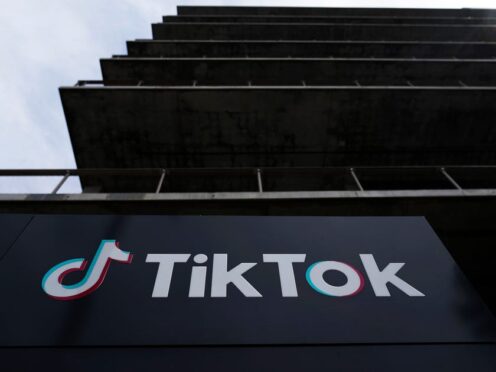
The House of Representatives has passed legislation that would ban TikTok in the United States if the social media platform’s China-based owner does not sell its stake within a year.
The decision by House Republicans to include TikTok as part of a larger foreign aid package fast-tracked the ban after an earlier version had stalled in the Senate.
A standalone bill with a six-month selling deadline passed the House in March by an overwhelming bipartisan vote as both Democrats and Republicans voiced national security concerns about the app’s owner, the Chinese technology firm ByteDance.
The modified measure now goes to the Senate after negotiations that produced a compromise.
Even if the legislation becomes law though, the company would have up to a year to find a buyer and would likely try to challenge the law in court, arguing it would deprive the app’s millions of users of their First Amendment rights.
Court challenges could significantly delay the timeline set out by Congress or block the law from going into effect.
The company lobbied hard against the legislation, pushing the app’s 170 million US users — many of whom are young — to call Congress and voice opposition.
But the ferocity of the pushback angered lawmakers on Capitol Hill, where there is broad concern about Chinese threats to the US and where few members use the platform themselves.
“We will not stop fighting and advocating for you,” TikTok CEO Shou Zi Chew said in a video that was posted on the platform last month and directed toward the app’s users.
“We will continue to do all we can, including exercising our legal rights, to protect this amazing platform that we have built with you.”
The Bill’s quick path through Congress is extraordinary because it targets one company and because Congress has taken a hands-off approach to tech regulation for decades.
Lawmakers had failed to act despite efforts to protect children online, safeguard users’ privacy and make companies more liable for content posted on their platforms, among other measures.
The TikTok ban reflects widespread concerns from lawmakers about China.

Members of both parties, along with intelligence officials, have worried that Chinese authorities could force ByteDance to hand over American user data or direct the company to suppress or boost TikTok content favourable to its interests.
TikTok has denied assertions that it could be used as a tool of the Chinese government and has said it has not shared US user data with Chinese authorities.
The US government has not publicly provided evidence that shows TikTok shared US user data with the Chinese government or tinkered with the company’s popular algorithm, which influences what Americans see.
The company has good reason to think a legal challenge could be successful, having seen some success in previous legal fights over its operations in the US.
In November, a federal judge blocked a Montana law that would ban TikTok use across the state after the company and five content creators who use the platform sued.
In 2020, federal courts blocked an executive order issued by then-president Donald Trump to ban TikTok after the company sued on the grounds that the order violated free speech and due process rights.

Enjoy the convenience of having The Sunday Post delivered as a digital ePaper straight to your smartphone, tablet or computer.
Subscribe for only £5.49 a month and enjoy all the benefits of the printed paper as a digital replica.
Subscribe